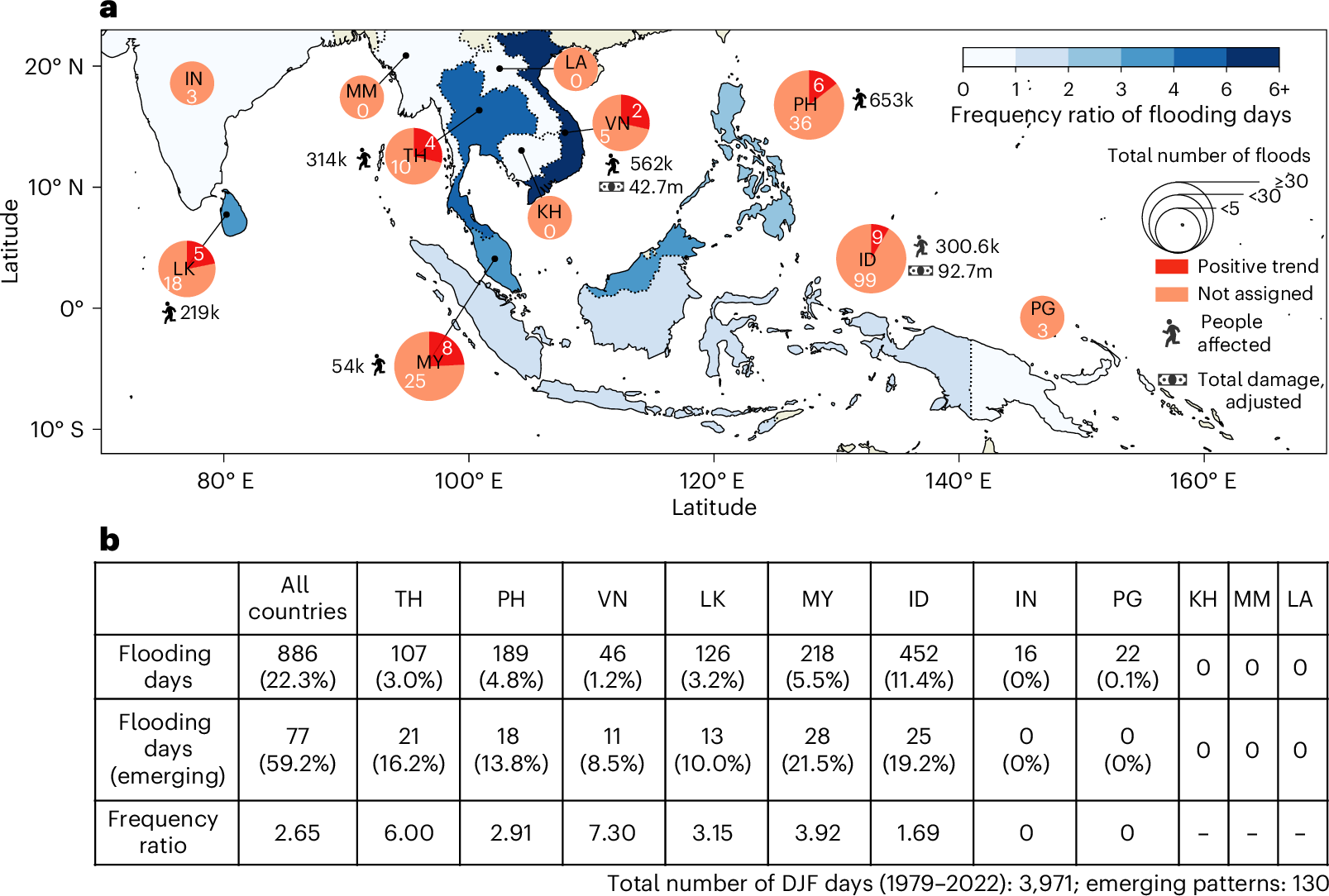Global warming and other factors may be contributing to changes in tropical weather patterns that are increasing the frequency of heatwaves and extreme rainfall in the Indo-Pacific region.
A recent study published in Nature Geoscience provides insights into how long-term changes in tropical weather patterns, possibly driven by global warming and other drivers, are significantly increasing the frequency of extreme weather events such as heatwaves and heavy rainfall in the Indo-Pacific. The paper, titled “Indo-Pacific regional extremes aggravated by changes in tropical weather patterns,” presents critical findings that highlight the emergence of new large-scale atmospheric patterns which are exacerbating regional climate extremes.
The study, led by doctoral student Chenyu Dong and Assistant Professor Gianmarco Mengaldo from the National University of Singapore, and a collaborative team of international scientists, uses advanced reanalysis data spanning from 1940 to 2022 to analyze the tropical Indo-Pacific region’s evolving weather systems. The researchers found that since the 1990s, previously rare weather patterns have become more common, while others have nearly disappeared. These changes are linked to shifts in the Pacific Walker Circulation, the atmospheric component of El Niño-Southern Oscillation, which is a critical driver of tropical climate and weather, and significantly affects extreme weather events worldwide.

Figure: a, The ratio of DJF flood days recorded under emerging weather patterns, compared with climatology. The sizes of the pie charts represent the total floods per country from 1979 to 2022, with red slices representing floods linked to emerging weather patterns and orange slices for those not assigned. TH, Thailand; PH, Philippines; VN, Vietnam; LK, Sri Lanka; MY, Malaysia; ID, Indonesia; IN, India; PG, Papua New Guinea; KH, Cambodia; MM, Myanmar; LA, Laos. b, The total number of flooding days within the DJF season for each country, the flood days associated with emerging weather patterns and the respective frequency ratios.
KEY FINDINGS:
– Emerging Weather Patterns: New atmospheric configurations associated with increased heatwaves and heavy rainfall have emerged, particularly over Southeast Asia, Northern Australia, and parts of the Pacific.
– Strengthened Walker Circulation: These patterns reflect a stronger Pacific Walker Circulation, which is associated with wetter and warmer conditions in Southeast Asia and drier conditions in the equatorial Pacific.
– Impacts on Weather Extremes: The emerging patterns are strongly linked to an increase in regional weather extremes, especially extreme precipitation and heatwaves, that are further aggravated by global warming.
These findings are significant in the context of climate change as they reveal that new and emerging weather patterns are contributing to increasingly severe weather in a region home to over a billion people. With extreme weather events posing severe socio-economic and environmental challenges, understanding these changes is critical for improving climate models and informing future climate adaptation strategies.
“Critical changes in tropical weather patterns are significantly aggravating regional extremes, namely heatwaves and extreme precipitation, in the tropical Indo-Pacific region. Our study is one of the first to disentangle trend vs variability in the tropics, an aspect that has been historically challenging. We show that the changes identified cannot be fully explained by interannual modes of variability, and a possible culprit is anthropogenic global warming, though the influence of other factors may play a role.” Davide Faranda, IPSL,
“The emergence of new tropical weather patterns is a key signal of how anthropogenic climate change is altering atmospheric dynamics on a daily scale. Our findings show a significant increase in heatwaves and extreme precipitation in the Indo-Pacific, which may have profound consequences not only for the region but for global climate as well. This shift in weather patterns challenges our previous understanding of tropical variability, and highlights the urgency to improve climate projections and preparedness for extreme events in vulnerable regions.” Gianmarco Mengaldo, NUS,
For further details on the study, please visit Nature Geoscience.


